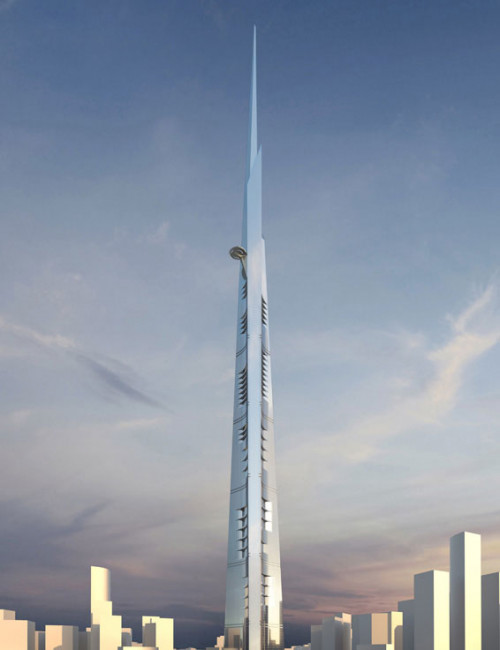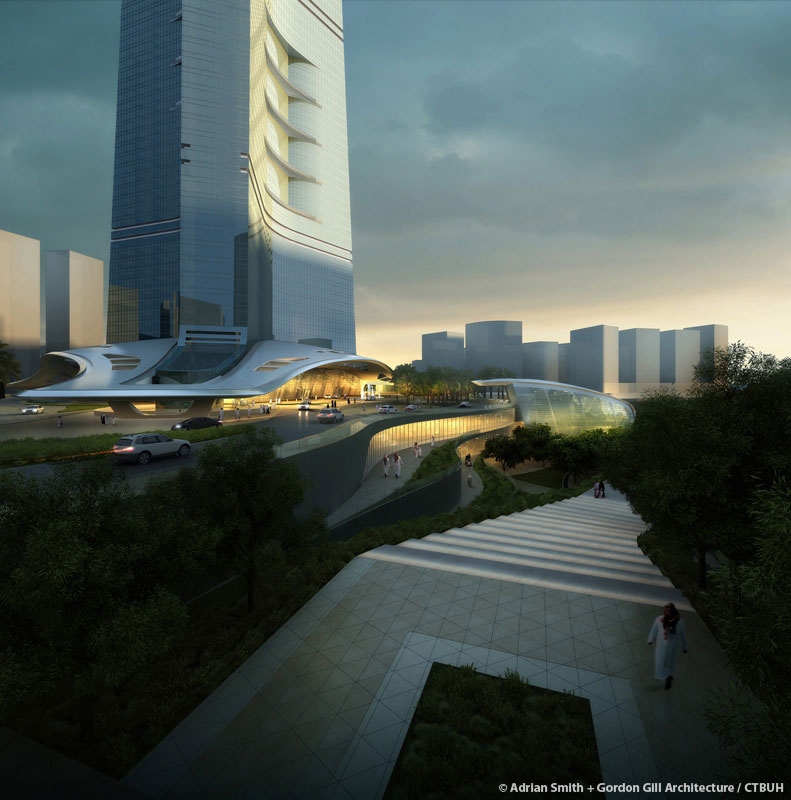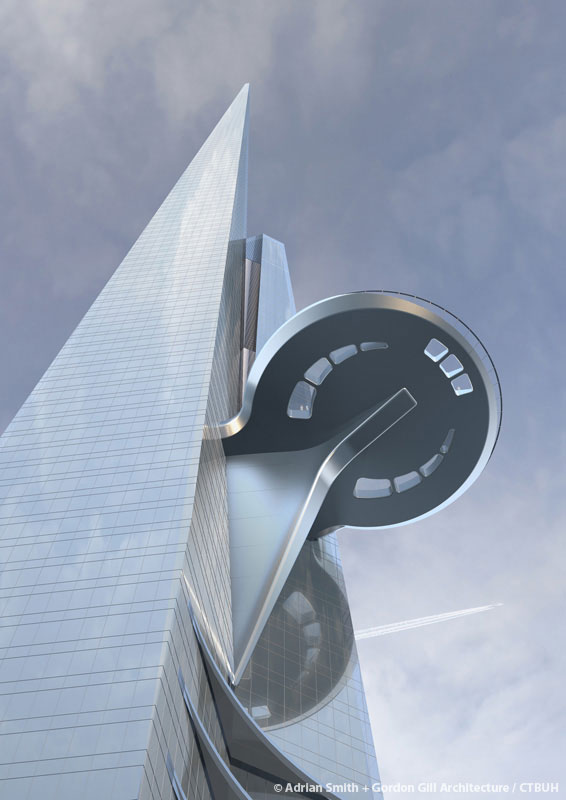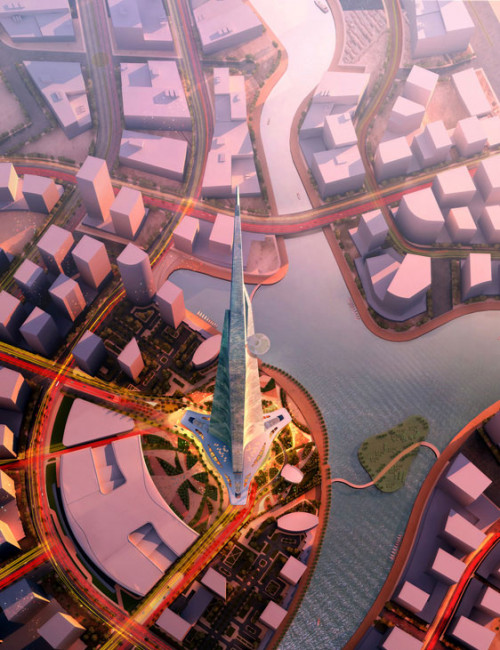Introduction: The Race to the Sky
Imagine a structure so tall that its peak pierces the clouds, casting a shadow over the Red Sea coast. This is the Jeddah Tower Saudi Arabia—formerly known as Kingdom Tower—a $1.2 billion megaproject designed to soar over 1 kilometer (3,280 feet) into the sky, making it the world’s tallest building. As the centerpiece of Saudi Arabia’s Vision 2030, this architectural titan symbolizes the Kingdom’s audacious leap from oil dependency to a future driven by innovation, tourism, and global influence. But what makes the Jeddah Tower more than just a record-breaking skyscraper? Let’s explore its genesis, design, and the bold statement it makes for Saudi Arabia Jeddah Tower and the world.
In the heart of Jeddah, Saudi Arabia, a structure of unparalleled ambition is slowly ascending toward the heavens. The Jeddah Tower—formerly known as Kingdom Tower—is poised to claim the title of the world’s tallest building, surpassing Dubai’s Burj Khalifa with its staggering planned height of over 1 kilometer (3,280 feet).
Designed to redefine skylines and symbolize Saudi Arabia’s transformative Vision 2030, this $1.2 billion megaproject is more than a feat of engineering; it’s a bold declaration of the Kingdom’s shift from oil dependency to a future fueled by innovation, tourism, and global influence. Yet, its journey to the clouds has been riddled with delays, controversies, and technical challenges. This article delves into the genesis, design, and profound implications of the Saudi Arabia Jeddah Tower, a project that could reshape not only Jeddah’s horizon but the future of urban architecture worldwide.
Announced in 2011, the Jeddah Tower is the crown jewel of the $20 billion Jeddah Economic City (JEC), a sprawling development spearheaded by Saudi Prince Al-Waleed bin Talal. Its purpose transcends mere height:
Economic Diversification: Part of Vision 2030, Saudi Arabia’s blueprint to reduce oil reliance by investing in tourism, tech, and infrastructure.
Global Prestige: A direct challenge to Dubai’s Burj Khalifa (828 meters), asserting Saudi dominance in the Gulf’s architectural arms race.
Urban Catalyst: Designed to attract 2 million annual visitors and 20,000 jobs to Jeddah, transforming the city into a global business hub.
📊 Jeddah Tower vs. Global Giants
| Skyscraper | Height (meters) | Floors | Completion | Key Feature |
|---|---|---|---|---|
| Jeddah Tower | 1,000+ | 167 | 2028+ | World’s highest observatory |
| Burj Khalifa (UAE) | 828 | 163 | 2010 | Iconic spire design |
| Shanghai Tower | 632 | 128 | 2015 | Double-skin façade for efficiency |
🌍 World’s Highest Observatory: A Sky-High Marvel in Jeddah Tower Saudi Arabia
Perched on the 157th floor of the Jeddah Tower Saudi Arabia, the skyscraper’s crowning jewel—the world’s highest observatory—promises an experience unlike any other. Slated to sit at a dizzying height of over 1,000 meters (3,280 feet), this observation deck will surpass the current record-holder, the Burj Khalifa’s At the Top (555 meters), by nearly double. Designed to offer 360-degree panoramic views of the Red Sea, Jeddah’s urban sprawl, and the vast Arabian Desert, the observatory is more than a tourist attraction; it’s a testament to Saudi Arabia’s audacious Vision 2030 ambitions and engineering prowess.
Design & Visitor Experience
The observatory’s design merges cutting-edge technology with luxurious comfort:
Glass-Floor Walkways: Transparent panels will give daring visitors the sensation of “floating” above the clouds.
Augmented Reality (AR) Telescopes: Interactive screens overlay historical, cultural, and environmental data onto the landscape below.
Sky Gardens: Indoor green spaces with native flora, creating serene oases amid the vertigo-inducing heights.
To put this into perspective, the Jeddah Tower observatory will be 2.5 times taller than the Eiffel Tower and nearly 1.5 times taller than the Shanghai Tower’s observation deck.
📊 Comparison: Global Observatory Heights
| Observatory | Height (meters) | Building | Key Feature |
|---|---|---|---|
| Jeddah Tower | 1,000+ | Jeddah Tower | AR telescopes, glass walkways |
| Burj Khalifa (UAE) | 555 | Burj Khalifa | Outdoor terrace |
| Shanghai Tower (China) | 562 | Shanghai Tower | Transparent glass floors |
| CN Tower (Canada) | 447 | CN Tower | EdgeWalk harness experience |
Engineering the Unreachable
Building an observatory at such an altitude presents unique challenges:
Wind Resistance: At 1 kilometer up, wind speeds can exceed 150 km/h. The tower’s tapered design and tuned mass dampers reduce sway to a barely perceptible 2 meters.
Elevator Innovation: High-speed elevators by KONE will whisk visitors to the top in under 2 minutes, with pressure-control systems to prevent ear discomfort.
Safety Protocols: Triple-redundant emergency systems, including fire-resistant materials and AI-driven evacuation routes.
Tourism & Vision 2030 Alignment
The observatory is central to Saudi Arabia’s goal of attracting 2 million annual visitors to Jeddah Economic City. Key projections include:
Revenue: $150 million yearly from ticket sales, dining, and merchandise.
Global Marketing: Partnerships with airlines and travel agencies to position Jeddah as a luxury tourism hotspot.
Cultural Showcase: Exhibits highlighting Saudi heritage, from ancient trade routes to modern Vision 2030 milestones.
🌐 Sustainability Meets Luxury
Despite its extreme height, the observatory prioritizes eco-conscious design:
Solar Panels: Integrated into the roof to offset 30% of its energy use.
Smart Glass: Adjusts tint to reduce cooling costs by 25% in Jeddah’s 45°C summers.
Engineering the Impossible: Design & Innovation
The Jeddah Tower Saudi Arabia isn’t just tall—it’s a marvel of modern engineering. Designed by Adrian Smith + Gordon Gill Architecture (AS+GG), the minds behind the Burj Khalifa, its sleek, tapered silhouette draws inspiration from the folded fronds of a desert plant. Key innovations include:
Tri-Axial Base: Enhances stability against desert winds, which can exceed 100 km/h.
Advanced Elevators: KONE ultra-fast elevators travel at 10 m/s, reaching the top in under 2 minutes.
Mixed-Use Vertical City: Combines luxury residences, a Four Seasons Hotel, offices, and retail spaces.
The tower’s mirrored glass façade reflects Saudi Arabia’s modernist ambitions while blending with the coastal desert landscape.
🏗️ Construction Progress (2024 Update)
[====░░░░░░░░] 40% Complete
Delays due to funding disputes (2017 anti-corruption purge) and pandemic supply chain issues have pushed completion to the late 2020s.
Economic Impact & Vision 2030 Alignment
The Saudi Arabia Jeddah Tower is a cornerstone of the Kingdom’s economic metamorphosis:
Tourism Surge: A sky terrace on the 157th floor will offer 360° views of the Red Sea, rivaling Dubai’s Burj Khalifa observation deck.
Tech Hub Ambitions: The tower’s smart infrastructure aims to lure global tech firms, aligning with NEOM’s AI-driven future.
Cultural Shift: A symbol of Saudi openness, contrasting with its conservative past.
🌍 Economic Impact Snapshot
| Metric | Jeddah Tower | Burj Khalifa |
|---|---|---|
| Annual Visitors | 2 million (projected) | 1.87 million (2023) |
| Construction Jobs | 12,000+ | 12,000 |
| Energy Consumption | 20% solar-powered | 15% solar-powered |
Why Jeddah Tower Matters for Saudi Arabia
The Saudi Arabia Jeddah Tower project is a cornerstone of Vision 2030’s goals:
Tourism Surge: A sky terrace on the 157th floor will offer 360° views of the Red Sea, rivaling Dubai’s Burj Khalifa observation deck.
Tech Hub Ambitions: The tower’s smart infrastructure aims to lure global tech firms, aligning with NEOM’s AI-driven future.
Cultural Shift: A symbol of Saudi openness, contrasting with its conservative past.
🌍 Economic Impact Snapshot
| Metric | Jeddah Tower | Burj Khalifa |
|---|---|---|
| Annual Visitors | 2 million (projected) | 1.87 million (2023) |
| Construction Jobs | 12,000+ | 12,000 |
| Energy Consumption | 20% solar-powered | 15% solar-powered |
Controversies & Challenges
Despite its promise, the Jeddah Tower Saudi Arabia faces scrutiny:
Labor Concerns: Reports of migrant worker exploitation, echoing issues in Dubai’s construction boom.
Environmental Cost: The tower’s energy needs (equivalent to a small city) clash with global sustainability trends.
Economic Risks: Critics argue $1.2 billion could address housing or healthcare gaps instead.
Yet, proponents counter that its long-term economic benefits justify the investment.
A New Chapter for Global Architecture
The Jeddah Tower isn’t just a building—it’s a daring experiment in vertical urbanism. If completed, it could inspire cities like New York or Tokyo to rethink skyscraper design, prioritizing mixed-use spaces and renewable energy. However, its success hinges on overcoming financial, technical, and ethical hurdles.
As cranes slowly ascend toward the heavens, the Jeddah Tower Saudi Arabia challenges us to ask: How high can humanity build—and at what cost? Stay tuned as we delve deeper into its engineering feats, cultural impact, and the race to redefine the skies. 🏙️🚀






2 thoughts on “Jeddah Tower Saudi Arabia: The Absolute Sky-Piercing Icon of Vision 2030”
To the inspireupscale.com Owner.
Greetins! from the owner